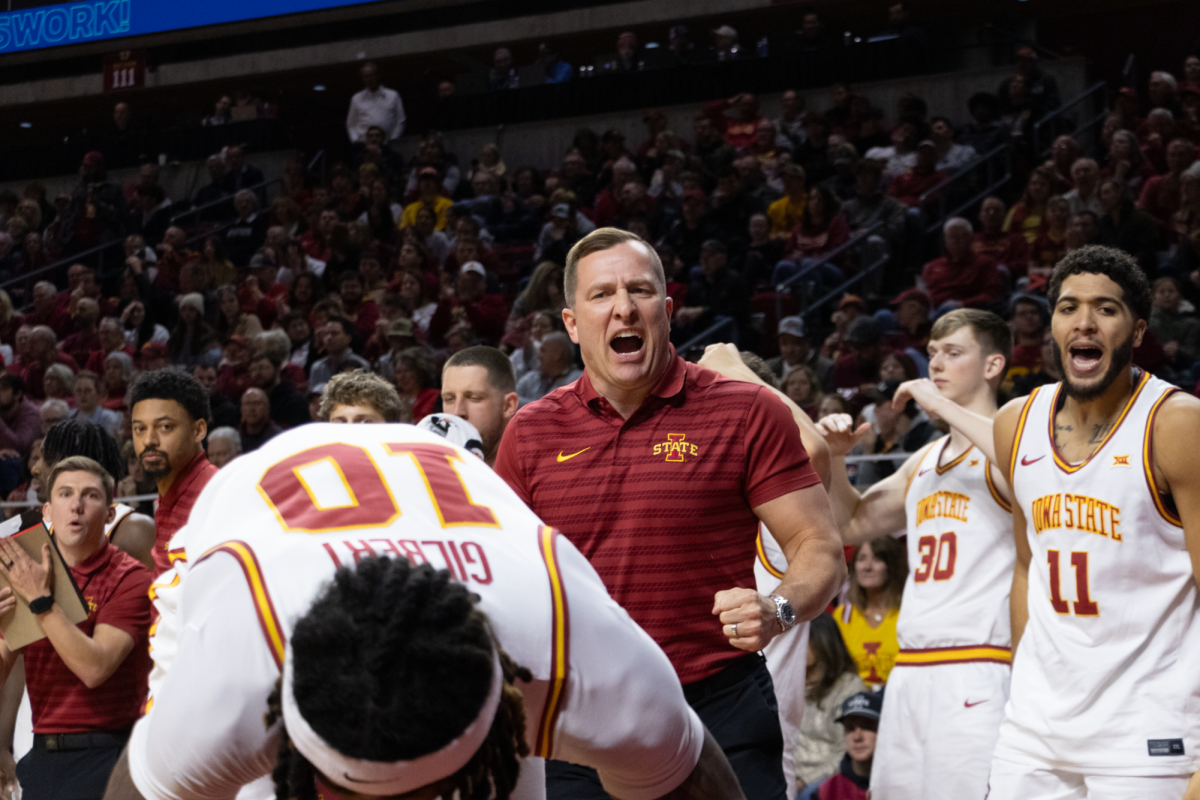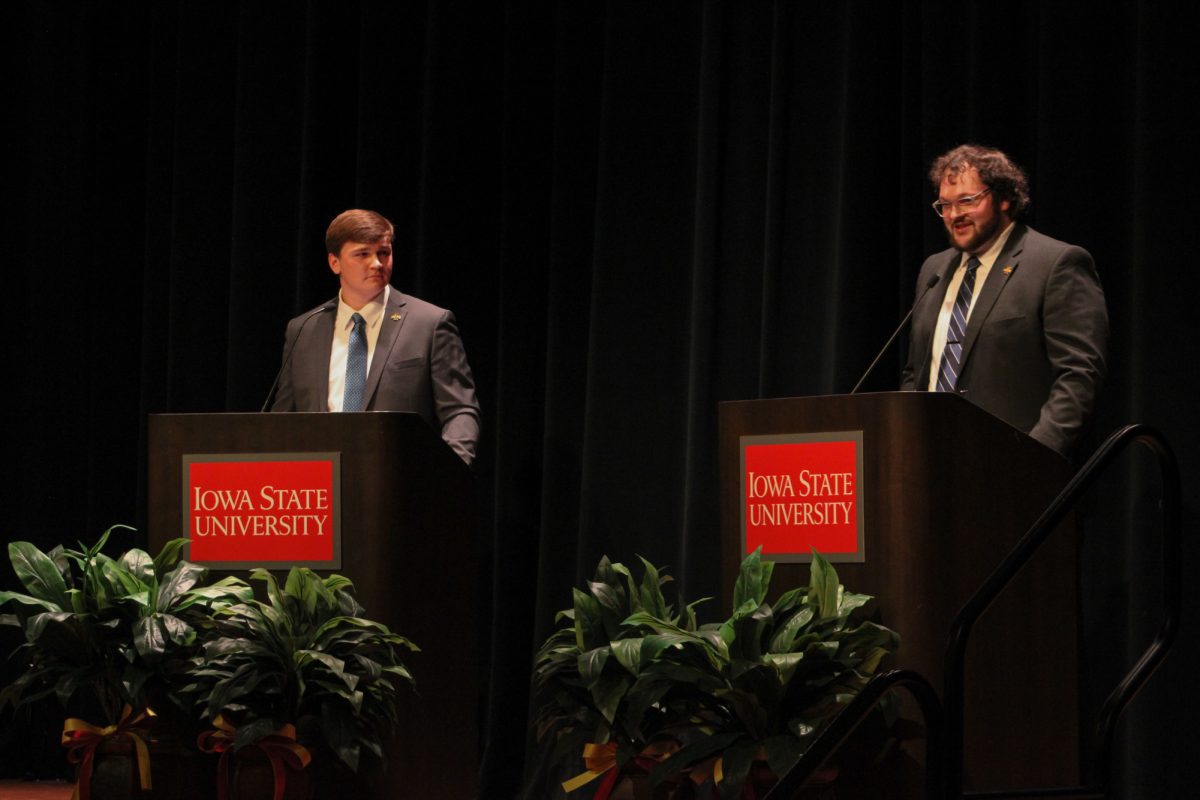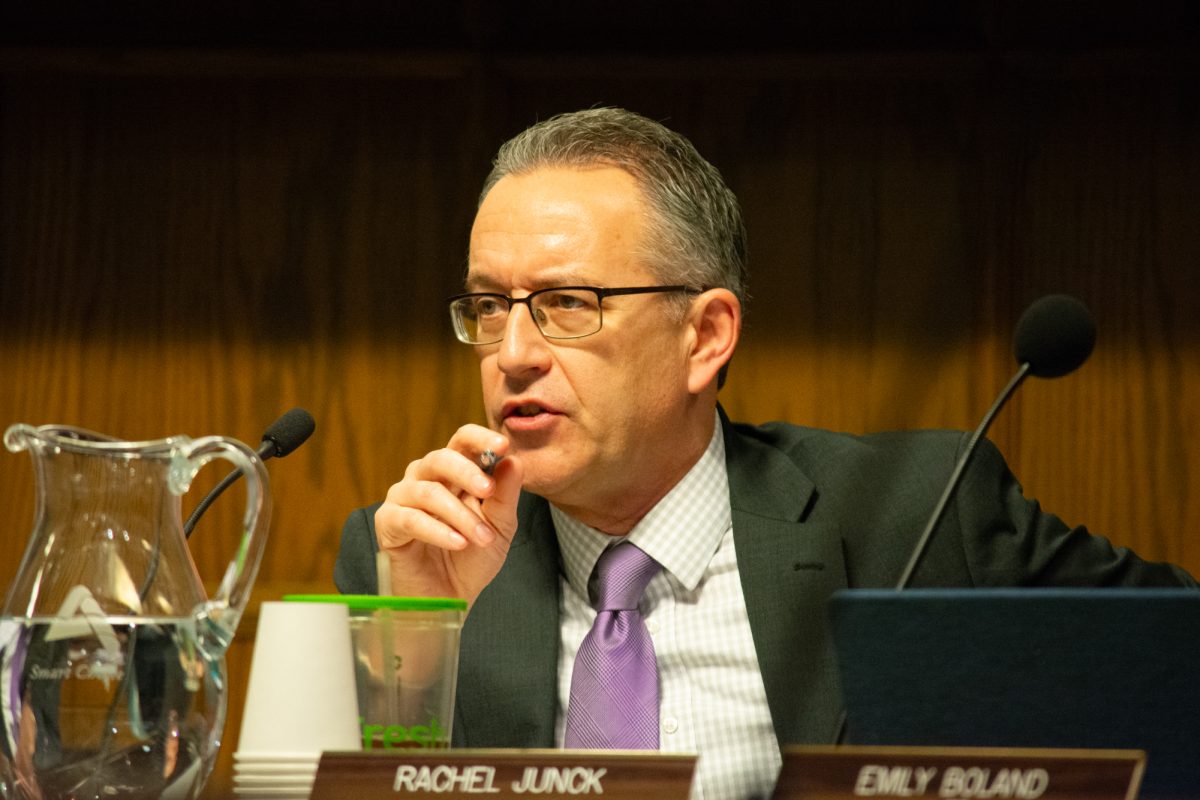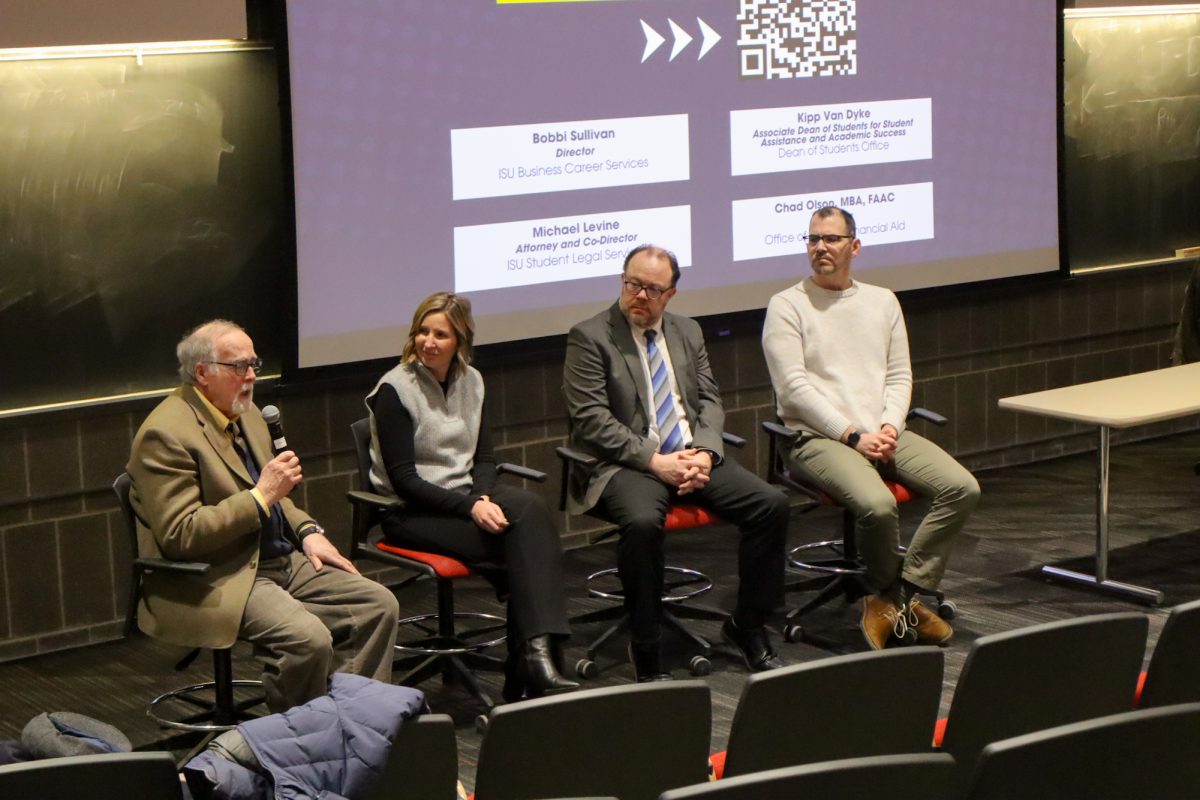Long-distance romance
January 12, 1998
Paige Gearhart sits by the phone eagerly awaiting a phone call from her boyfriend Kelly Daughenbaugh. He always calls her on Wednesday nights at the same time.
Just like clockwork, the phone rings and the excitement mounts. Paige is glad she can count on Kelly, even though he’s thousands of miles away.
It has been said that absence makes the heart grow fonder. For many Iowa State students, this idea has been put to the test as they cope with long distance relationships.
Gearhart, a senior in family and consumer science, has been juggling a long-distance relationship and a college career for two years.
“I didn’t realize how tough a long-distance relationship would be,” Gearhart said. “The hardest was not being able to talk to him for 60 days straight.”
Gearhart began her two-year relationship with Daughenbaugh in November 1995. They met at a college party and had a date the next night. The day after their date, Daughenbaugh, who is in the Navy, had to return to Hawaii because his leave time was finished.
“I wasn’t sure if anything would happen with us,” Daughenbaugh said. “I called Paige on Christmas and wrote letters and our relationship just grew from there.”
Though Daughenbaugh and Gearhart’s relationship is working, experts say it takes a lot of work from both partners to keep a long-distance relationship working.
Patricia Keoughan, a marriage and family therapist and an adjunct professor at ISU, said there are three factors that are needed to help long-distance relationship succeed.
The first factor is communication. “Phone calls, letters and email are very important in long-distance relationships,” Keoughan said.
The second factor, keeping in contact as much as possible, is also important, she said. Also, Keoughan said each partner must be willing to give the same level of commitment to the relationship if it is going to succeed.
Keoughan said there are many couples on college campuses who are involved in long-distance relationships. This is often common in younger couples because one of the partners has moved away and gone to college while the other stays at home to go to school, she said.
John Gray, author of “Men are From Mars, Women are From Venus,” has the same advice as Keoughan. In his book, he writes that letters, which help with sharing emotions, are a great way to stay in touch with a partner’s feelings.
Gray also says understanding and trust are “key” in a long-distance relationship.
Krista Solberg, a junior in the liberal arts and sciences, said trust is not a problem in her long-distance relationship.
“I don’t worry about Rod at all. We built a strong trust before we were ever apart,” Solberg said. “Besides, I have trained him to do nothing more than look.”
Solberg met her fiancee Rod Sherman at ISU in the spring of 1996. Solberg and Sherman lived in the same residence hall, and Sherman acted like her “big brother,” she said. Sherman was hired as a teacher in La Miranda, Calif., and Solberg is still finishing her college career at ISU.
Keoughan said trying to juggle college and a relationship is very difficult, especially if it is a long-distance relationship.
Couples need to set aside time for themselves and prioritize the rest of their lives, she said.
Solberg said her long-distance relationship has taken a toll on her schoolwork.
According to Gray’s book, the drop in grades once a loved one has moved away is common in most relationships involving some distance.
Katie White, a junior in speech communications, noticed a big drop in her grades when her boyfriend Mark Stevenson moved to Kansas.
They met and dated at Iowa Western Community College as freshmen. White then transferred to ISU, and Stevenson went to Kansas to play baseball.
“I was always planning when I could go see Mark next,” White said.
White said she slipped from getting straight As to a Bs immediately after Stevenson left.
She said she was always gone on the weekends, “traveling to Kansas to go see him,”
Solberg said she also noticed a drop in her grades when Sherman moved away. “I found my grades slipping because Rod moved west and I still have a year left of school. All I could think about was him and our wedding plans,” she said.
Solberg said being apart while she was making wedding plans was very stressful.
Sherman added that “the long distance put a tax on our relationship, making it more fragile than if we would have seen each other every day. It seemed like every time we were together we were discussing how many guests to invite to the wedding and not having any personal time.”
She said stressful and fragile long-distance relationships are difficult to maintain because you “lose the element of non-verbal communication.”
“Sometimes you can tell how your partner is feeling by the tone in their voice, but that’s not enough non-verbal communication,” Keoughan said.
Gearhart never had the chance for non-verbal feedback. She has to rely on letters and the occasional phone call as her only way to communicate with Daughenbaugh.
“While Kelly was on Westback (a six month training period on a submarine that travels in a loop from Hawaii to Japan and back), he couldn’t send me letters or even call until the submarine docked. I talked to him a total of 15 minutes in the past four months,” Gearhart said.
Keoughan said couples need to keep “communicating on all levels of self-awareness. These include what you think, feel, want and see.”
“You need to thoroughly understand what your partner is experiencing and respond if you don’t agree,” Keoughan said.
Gearhart sees Daughenbaugh once every nine months and only 10 days at a time.
She said Daughenbaugh has spent “over $2,500 in the past year on plane tickets and phone calls.” She also spends about $300 a month on phone bills.
In fact, the last time she saw him she flew to Hawaii for a grand total of $1,400.
Solberg has also puts a lot of time and money into her relationship. She spent about $90 for her last month’s phone bill and $120 on a bus ticket to see Sherman.






